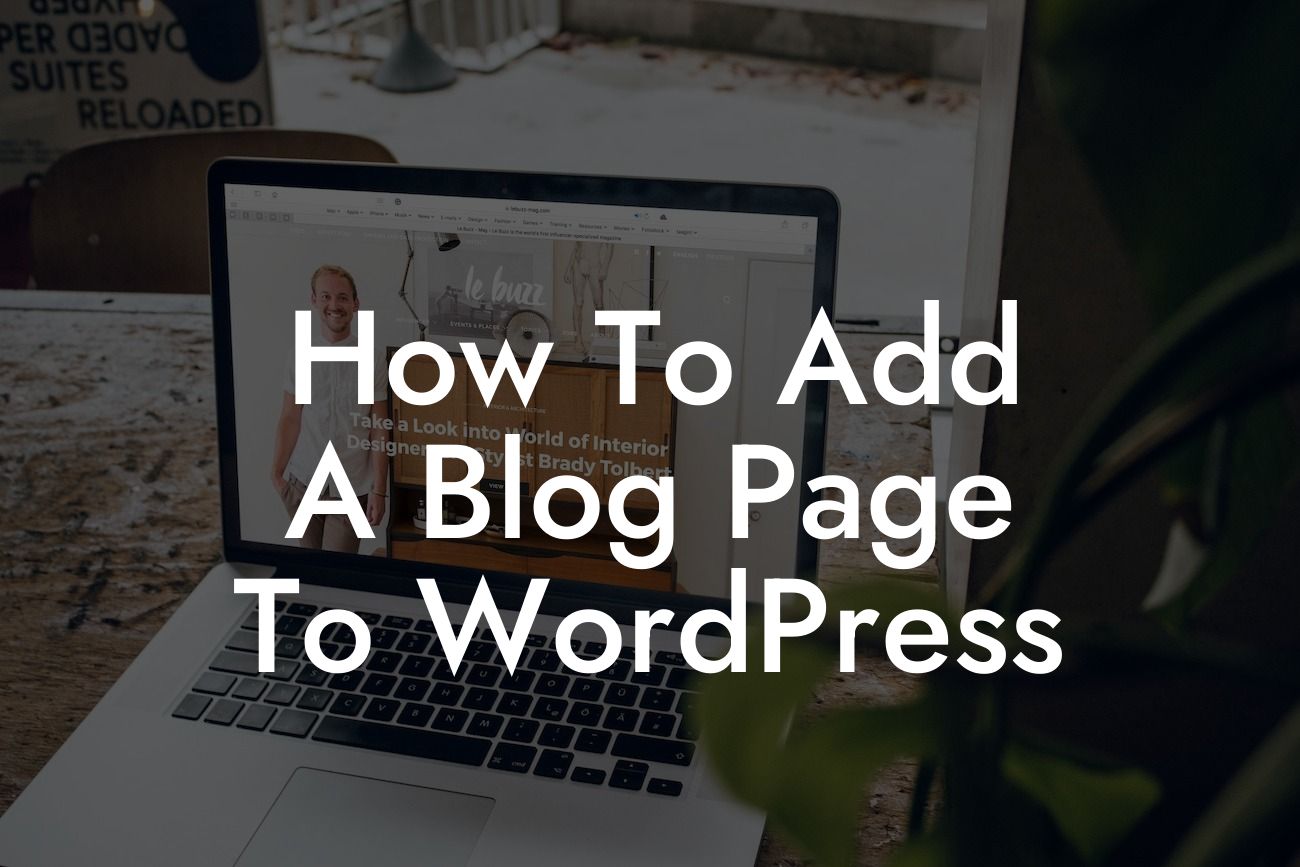Adding a blog page to your WordPress website is a powerful way to engage with your audience, share valuable content, and boost your online presence. Whether you are a small business owner or an entrepreneur, having a blog can significantly enhance your website's credibility and attract more visitors. In this guide, we will walk you through the process of adding a blog page to WordPress, step by step, and provide you with some expert tips to make your blog stand out from the crowd.
Adding a blog page to WordPress is a breeze, thanks to the user-friendly interface and the availability of various plugins. Here's a detailed step-by-step guide to get you started:
1. Choose a Suitable WordPress Theme:
Select a theme that aligns with your brand and supports blog functionality. Look for themes that offer customization options, mobile responsiveness, and a clean design.
2. Install and Activate a WordPress Plugin:
Looking For a Custom QuickBook Integration?
To add a blog page, you'll need to install a WordPress plugin. There are several great options available, like DamnWoo's Blogify plugin, which provides advanced features and customization options for your blog.
3. Create and Design Your Blog Page:
Once the plugin is activated, create a new page and assign it as your blog page. Customize the layout, design, and other elements to make it visually appealing and user-friendly. Utilize header tags (H2, H3) for headings and organize your content with bullet points and ordered lists for better readability.
4. Configure Blog Settings:
Access the plugin's settings and customize the crucial aspects of your blog, such as permalink structure, number of posts per page, date format, and social sharing features. Optimize your blog's URL structure to make it more SEO-friendly.
5. Set Up Categories and Tags:
Organize your blog content by creating relevant categories and tags. This helps both search engines and your visitors navigate through your content more efficiently.
6. Install Essential Plugins:
Enhance your blog's functionality by installing essential plugins like SEO optimization tools, social sharing buttons, contact forms, and caching plugins to improve page load speed.
How To Add A Blog Page To Wordpress Example:
Let's take a fictional example of Sarah, a small business owner specializing in organic skincare products. Sarah has recently launched a WordPress website and wants to add a blog page to share skincare tips and product updates. By following the steps mentioned above and using DamnWoo's Blogify plugin, Sarah successfully adds a visually appealing blog page to her website. She customizes the layout, adds professional images, and categorizes her blog posts based on topics like skincare routines, ingredient spotlights, and customer testimonials. With DamnWoo's SEO optimization features, Sarah's blog starts ranking higher in search engine results, attracting a larger audience and boosting her business's visibility.
Congratulations! You have now learned how to add a blog page to WordPress effortlessly. Remember, a well-designed and regularly updated blog can make a significant impact on your small business or entrepreneurial venture. Explore DamnWoo's collection of plugins to further enhance your online presence and unleash your website's full potential. Don't forget to share this article with others who may find it helpful and discover more insightful guides on DamnWoo. Start creating compelling blog content today and take your online success to new heights!













